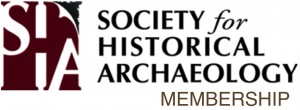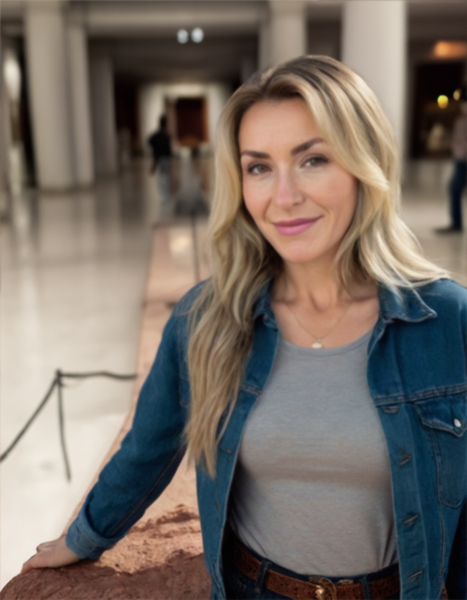 Here’s the latest in our series of entertaining interviews with a diverse array of your fellow SHA members. Meet a member for the first time or learn something about a colleague that you never knew before. This blog series also offers current members an opportunity to share their thoughts on why SHA membership is important (Camaraderie? Professional service? Exchange of ideas in conference rooms and beyond? You tell us!). If you would like to be an interviewee, please email the Membership Committee Social Media Liaisons Eleanor Breen (eabreen@mountvernon.org) or Kim Pyszka (kmpyszka@aum.edu).
Here’s the latest in our series of entertaining interviews with a diverse array of your fellow SHA members. Meet a member for the first time or learn something about a colleague that you never knew before. This blog series also offers current members an opportunity to share their thoughts on why SHA membership is important (Camaraderie? Professional service? Exchange of ideas in conference rooms and beyond? You tell us!). If you would like to be an interviewee, please email the Membership Committee Social Media Liaisons Eleanor Breen (eabreen@mountvernon.org) or Kim Pyszka (kmpyszka@aum.edu).
Suzanne Militello (suzannemmtlo@outlook.com) has spearheaded pioneering research in the field of historical archaeology, focusing on diverse topics such as urbanization, immigration, and social inequality. Her innovative approaches to excavation, analysis, and interpretation have shed new light on the lives of past inhabitants, revealing untold stories hidden within the archaeological record. As a staunch advocate for community engagement, she has forged strong partnerships with local stakeholders, indigenous communities, and descendant groups. Through collaborative projects and outreach initiatives, she has empowered marginalized voices, promoted cultural heritage awareness, and fostered a sense of ownership and pride in shared heritage. She is also valued member of the Society and a research associate at Baruch College.
Fieldwork or Labwork?
While both fieldwork and labwork are integral to historical archaeology, I find myself drawn more towards fieldwork. There's an undeniable allure to being out in the field, uncovering layers of history, and connecting with the physical remains of the past. Fieldwork allows for direct engagement with the archaeological site, immersing oneself in its context, and piecing together the story it has to tell. It's a dynamic and hands-on experience that offers immediate gratification and a sense of discovery. However, I do recognize the importance of labwork in the analytical process, where artifacts are cleaned, cataloged, and studied in greater detail. Both aspects complement each other, but if I had to choose, I'd pick fieldwork for its excitement and the thrill of uncovering history firsthand.
What are you currently reading?
Currently, I'm engrossed in "Collapse: How Societies Choose to Fail or Succeed" by Jared Diamond. This captivating book delves deep into the intriguing phenomenon of societal collapse, exploring the intricate web of factors that contribute to the rise and fall of civilizations throughout history. Diamond draws upon a wealth of interdisciplinary research, spanning archaeology, anthropology, ecology, and history, to unravel the complex dynamics that underlie the resilience or vulnerability of human societies. One of the most compelling aspects of "Collapse" is Diamond's ability to weave together narratives from disparate time periods and geographical regions, illuminating common patterns and lessons that transcend cultural boundaries. Through vivid case studies ranging from the ancient Maya civilization to modern-day societies facing environmental challenges, Diamond elucidates the interconnectedness of environmental degradation, social inequality, political instability, and economic mismanagement in shaping the fate of civilizations.
As I delve deeper into the pages of "Collapse," I find myself captivated by Diamond's thought-provoking insights and his nuanced exploration of the myriad forces at play in shaping human history. His compelling arguments challenge conventional wisdom and prompt reflection on the complex interplay between human societies and their natural environments. Moreover, "Collapse" serves as a poignant reminder of the urgent need for sustainable practices and responsible stewardship of our planet's resources to avoid repeating the mistakes of the past.
How do you incorporate oral history and indigenous knowledge into your archaeological research?
Incorporating oral history and indigenous knowledge into archaeological research enriches our understanding of the past by providing alternative perspectives, narratives, and insights that complement and contextualize archaeological evidence. Collaborating with indigenous communities and engaging in respectful dialogue, archaeologists can learn from traditional knowledge systems, oral traditions, and cultural practices that offer invaluable insights into past lifeways, environmental stewardship, and socio-cultural dynamics. By combining archaeological data with oral histories, ethnographic research, and community-driven narratives, we can construct more holistic interpretations of the past that honor indigenous perspectives, recognize the continuity of indigenous lifeways, and contribute to decolonizing archaeological practice. Moreover, incorporating indigenous voices into research design, interpretation, and dissemination processes fosters mutual respect, reciprocity, and empowerment, strengthening partnerships between archaeologists and indigenous peoples based on principles of trust, collaboration, and shared stewardship of cultural heritage.
How do you approach ethical dilemmas and concerns in historical archaeology?
Ethical considerations are paramount in historical archaeology, guiding every aspect of our research, from excavation methods to the treatment and interpretation of artifacts. I approach ethical dilemmas with a commitment to transparency, accountability, and respect for diverse perspectives, recognizing the inherent complexities and sensitivities involved in studying the material remains of past cultures. Consultation with descendant communities, adherence to professional codes of conduct, and adherence to legal frameworks such as the Native American Graves Protection and Repatriation Act (NAGPRA) are essential in navigating ethical challenges and ensuring that archaeological research upholds principles of social justice, cultural sensitivity, and academic integrity.
What challenges do you anticipate in the preservation and conservation of archaeological sites and artifacts?
Preservation and conservation of archaeological sites and artifacts are fraught with numerous challenges, including environmental degradation, urbanization, looting, vandalism, and inadequate funding and resources. Climate change poses a particularly grave threat to archaeological sites, exacerbating erosion, flooding, and other forms of natural degradation. Furthermore, competing interests and priorities, conflicting stakeholder agendas, and insufficient legal protection often hinder efforts to safeguard cultural heritage effectively. Addressing these challenges requires a multi-faceted approach involving collaboration between governments, local communities, heritage organizations, and academia, as well as the implementation of sustainable management strategies, public awareness campaigns, and robust legislative frameworks to ensure the long-term preservation and stewardship of archaeological resources for future generations.
Why are you a member of SHA?
I became a member of the Society for Historical Archaeology (SHA) early in my academic career, and it has been an incredibly valuable resource for me ever since. As an archaeologist, I believe that it is important to stay up-to-date with the latest research and developments in the field, and the SHA provides an excellent platform for doing so. Membership in the SHA has given me access to a wide range of publications, including the Journal of Historical Archaeology, which is one of the leading academic journals in the field. I have also had the opportunity to attend the SHA's annual conference, which brings together scholars from around the world to share their research and network.
Beyond these benefits, I have found that being a member of the SHA has also helped me to build relationships with other archaeologists and professionals in related fields. This has opened up new opportunities for collaboration and research, and has also helped me to build a sense of community within the field.
How many years have you been a member (approximately)?
I have been a proud member of the Society for Historical Archaeology for about 16 years. During this time, I have witnessed the organization's growth and impact on the field, as well as benefited from its diverse range of activities and resources. My membership has been instrumental in furthering my professional development, fostering meaningful connections within the historical archaeology community, and staying engaged with ongoing research and discussions.
Which article from Historical Archaeology has been the most influential to you?
The article "Toward a Methodology for the Use of Oral Sources in Historical Archaeology" by Louise Tolson resonates deeply with me and has been profoundly influential in shaping my approach to archaeological research. This article represents a significant contribution to the field of historical archaeology by advocating for the integration of oral history methodologies into archaeological practice. By bridging the gap between material culture and oral narratives, the authors propose an innovative approach that enriches our understanding of the past and expands the methodological toolkit available to archaeologists. The emphasis on using objects as mnemonic aids in oral-history projects resonates with my own research interests in community engagement and collaborative storytelling. Recognizing the power of artifacts to evoke memories and stimulate dialogue, the article highlights the potential for artifact-centered interviews to yield valuable insights into past lifeways and cultural practices. Moreover, the focus on working-class women in northeastern England underscores the importance of amplifying marginalized voices and challenging traditional narratives of the past.
This article has inspired me to explore interdisciplinary approaches that combine archaeology, memory studies, and oral history to construct more inclusive and nuanced interpretations of the past. By embracing diverse sources of evidence and engaging with descendant communities, we can enrich our understanding of historical landscapes, foster meaningful connections with the past, and promote social justice within archaeological practice.
Which benefit of belonging to SHA do you find the most beneficial?
Among the many benefits of belonging to the Society for Historical Archaeology, I find the annual conference to be particularly valuable. The conference provides a platform for scholars, professionals, students, and enthusiasts from around the world to come together, exchange ideas, and showcase their research. It offers a diverse array of sessions, workshops, and field trips covering a wide range of topics within historical archaeology, allowing attendees to stay abreast of the latest developments in the field, forge new collaborations, and gain insights from leading experts. Additionally, the conference fosters a sense of camaraderie and community among attendees, creating opportunities for networking, mentorship, and professional growth. Overall, the annual conference is an indispensable resource for anyone passionate about historical archaeology, offering inspiration, knowledge, and connections that enrich both research and practice.

